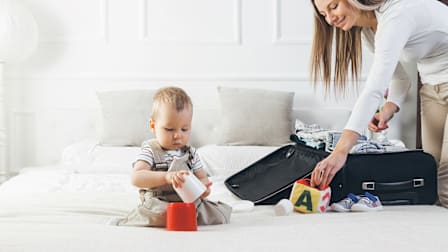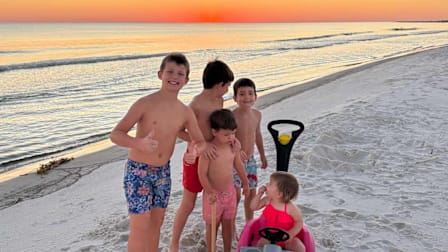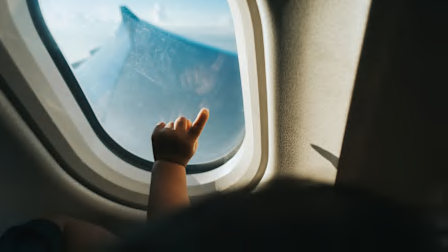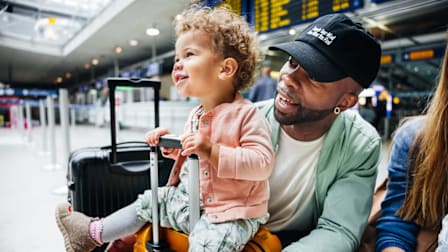Do You Need a Travel Bag for Your Child Car Seat or Stroller When You Fly?
Protect your baby’s gear before you board your flight

As if boarding a flight with your baby weren’t stressful enough, there’s also all the baby gear to consider. From car seats and carriers to baby bottles and bibs, babies have a lot of things. While most of those things make travel easier with young children, the challenge is figuring out how to get all your baby gear from point A to point B, especially when you throw hectic airports and turbulence into the mix.
Car seat travel bags and stroller bags are designed to protect essential (and pricey) baby gear during air travel, and reduce the risk of damage if they are tossed in with other luggage. But are these bags practical or even necessary? We spoke with CR’s in-house car seat safety experts, a child passenger technician, and parents who travel with their babies to get to the bottom of whether it pays to invest in a car seat bag or stroller bag for travel.
Pros of Car Seat and Stroller Travel Bags
You don’t have to pay extra to check a car seat or stroller travel bag. Car seats, strollers, and booster seats don’t usually count as luggage, though you should look into your airline’s specific policy before you fly. Checking these items at the gate can lower your risk of damaging them, and the American Academy of Pediatrics (AAP) recommends packing your car seat in a protective bag or box.
For more, see family travel hacks from a mom of 5.
Limitations of Car Seat and Stroller Travel Bags
It’s an extra thing to manage. “I didn’t want to wrestle with a travel bag, especially since I was traveling alone, and managing a lot,” says CR’s Angela Lashbrook. “I bought a seat for my child on every flight, so I used my car seat on the plane. Not getting a bag for the stroller was a bit of a risk, but there was no damage done to it that I could see. Totally fine.” “The items are actually easier to carry without the bag, so we put it on last-minute before gate check,” Gulati-Gilbert says.
There’s a limit to how much damage protection any car seat or stroller travel bag can offer. A quality bag may be able to withstand dirt, dust, and water, but Emily A. Thomas, PhD, CR’s in-house manager of auto safety, cautions parents against putting their faith in a bag protecting their baby gear against structural damage.
“Car seat bags are best for either ease of carrying your car seat through the airport or gate-checking/checking your car seat,” Thomas says. “The bags are typically nylon-type bags and they can protect your seat from dust and dirt. Since you’re planning to put your kid in the seat, I like to keep it covered if I’m checking my seat so it doesn’t get gross while being handled, transferred throughout the airport, or on the conveyor belt.”
Pieroni says she was worried about potential damage to her car seat and stroller that would render them unusable at their destination, and having to worry about finding a new stroller and/or car seat on the road.
If your car seat incurs damage during transit, your warranty might cover repair or replacement, even if it wasn’t covered by a bag, Dilts says, but you should consult your car seat manufacturer to confirm the limitations of your warranty. Still, that’s cold comfort if your car seat is damaged en route and you find yourself suddenly without one, miles from home. “If it’s damaged upon arrival during travel, the warranty would only be helpful after my travels and I would still be in a position to replace the damaged item,” Pieroni says.
Gulati-Gilbert takes things one step further when traveling: She leaves her more expensive stroller and car seat at home. “We opted to purchase a less expensive travel car seat and travel stroller so that we wouldn’t worry about travel damages and warranties,” Gulati-Glibert says.
Bottom line: Don’t expect a bag to protect expensive strollers and car seats from extreme turbulence or being mishandled.
Protecting Your Car Seat When You Fly
Our experts were more focused on protecting car seats than strollers during travel. Structural damage to car seats can seriously risk your baby’s safety if you are in a car crash. If you decide to check your car seat into baggage, Thomas says it’s a good idea to inspect your car seat foams (under the soft goods) for any cracking after retrieving it. “If there’s damage to the foams or any of the parts aren’t working properly, then you should contact the car seat manufacturer’s customer service or replace your seat,” Thomas says. Not all car seat damage is visible to the naked eye, says Jennifer Stockburger, director of operations at CR’s auto test center.
The Case for Bringing Your Car Seat With You on the Plane
The Federal Aviation Administration (FAA) permits children under two to travel on a parent’s lap, though it discourages this practice and recommends that you secure your child in an approved child restraint system in their own seat.
The AAP and Manufacturers Alliance Child Passenger Safety (MACPS) take a stricter stance. Both advise securing your child in an approved car seat (its label should have the verbiage “This child restraint is certified for use on aircraft,” according to MACPS) and the AAP advises that the seat should be approved for your child’s age and size, and installed with the airplane’s safety belt.
Infants weighing less than 20 pounds should be buckled into a rear-facing seat, according to the AAP, and children who weigh between 20 and 40 pounds should be restrained in a car seat. CR’s Thomas notes that MACPS doesn’t expect a car seat to withstand the same force in the plane’s luggage compartment as it would in a motor vehicle crash. However, once you reach your final destination, MACPS recommends inspecting your car seat to make sure no damage has occurred and that it is functioning properly.
Should You Rent a Car Seat for Travel?
Renting a car seat at your final destination is an option, but with it comes caveats. “Similar to how we don’t recommend purchasing used car seats, you just can’t be sure of its use or crash history,” Stockburger says. “When you’re renting a car seat you are often combining an unfamiliar car with an unfamiliar child seat. When you’re at a rental facility, it can be a tough time to review the manual.”
Thomas recommends keeping three important factors in mind if you plan to rent a car seat. “Check to make sure the seat you select is not expired, inspect it for damage and to make sure all parts are there (lower anchor connectors, chest clip, buckles, tether connector, etc), [and since] it’ll likely be a model you’re not familiar with, check online for the instructions,” Thomas says.
The Takeaway on Travel Bags: It’s Parents’ Choice
There is no right or wrong answer when it comes to covering your car seat or stroller with a bag for air travel, but doing so can help keep these items clean and dry. Although many car seat and stroller manufacturers sell their own travel bags, CR parents who used less expensive generic brands were perfectly satisfied with them.




















